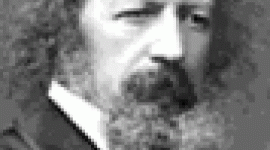Breathing Techniques to Calm Anxiety and Panic
Significant help for those anxious moments
Panic disorder can be frightening, disabling, and difficult to treat. It's usually mistreated by well-meaning health professionals for years. Recent research and practice supports the use of several steps. The most important focus is breathing. Slow, abdominal breathing alone has been shown to abort panic attacks and prevent them. But for a person with panic disorder, learning slow abdominal breathing can be quite difficult. People with panic disorder are almost always chest breathers. The worst thing you can tell a person during a panic attack is to breathe deeply. I have seen clients who simply could not breathe with their diaphragm without a great deal of training. If they can learn to breathe slowly with their diaphragms, they will not panic!
 Some tips on learning diaphragmatic breathing. Start while lying on your back. Place one hand on your chest and one hand on your belly (between navel and ribs). Focus on allowing the belly to rise easily when inhaling and fall when exhaling. HOLD THE CHEST STILL with your hand on your chest. The objective is to breathe all the time with the belly (diaphragm) and not the chest. You are aiming at about 6 breaths per minute. This is a slow relaxed process. There should be no sense of effort.
Some tips on learning diaphragmatic breathing. Start while lying on your back. Place one hand on your chest and one hand on your belly (between navel and ribs). Focus on allowing the belly to rise easily when inhaling and fall when exhaling. HOLD THE CHEST STILL with your hand on your chest. The objective is to breathe all the time with the belly (diaphragm) and not the chest. You are aiming at about 6 breaths per minute. This is a slow relaxed process. There should be no sense of effort.
If the belly won't move and the chest continues to move, put a weight on the belly between the navel and ribs (where their hand was). A heavy book will do, but a sandbag that weighs 3 - 5 pounds is best. Focus on "allowing" the weight to rise on inhale and sink on exhale. Again - no effort!
If still no success, kneel on all fours, ie., assume a position of a four-legged animal. In this position, the chest tends to be locked in place, forcing the diaphragm to take over the breathing task. Slow and easy, no effort.
In some stubborn cases, biofeedback of the diaphragm, chest, and various muscles involved can unstick a stuck diaphragm. This requires someone with the proper equipment and trained in the technique.
Once the person learns to breathe with their belly, they must practice, practice, practice. The first week, they should practice for only a few breaths at a time while lying on their back. Then gradually extend the practice time to 15 minutes. When this can be done comfortably, they should start to practice while sitting. Then standing. Then walking.
After they can breathe with the belly in all positions, they are to practice in different situations. Start with easy situations like sitting in a car. Then sitting in a restaurant. Progress until they can breathe with the belly in situations that previously provoked a panic attack. See phase 3 below.
IMPORTANT: If at any time during the breathing training, they feel dizzy or light-headed, they are to stop the exercise, rest, and try again in a few minutes. The breathing training is not about being tough or facing your fear. It is about learning to breathe to normalize the bodily functions.
The second phase of treatment runs concurrently with phase one (after abdominal breathing is learned). In a therapy session with a well-trained professional, the person learns that the symptoms that seem to signal imminent death are actually quite harmless. The client is instructed to hyperventilate by breathing with the mouth open and taking deep breaths for about a minute or two. This usually instantly produces panic symptoms (lending support to the theory that panic is a hyperventilation phenomenon). Once the dreaded symptoms are produced, the client notes that they feel just like a panic attack. Then the client switches to abdominal breathing and learns that within a minute or two, these symptoms disappear. This is repeated weekly in session until the client is quite comfortable that they can not only produce the symptoms of panic at any time, but that they can stop them at will.
They can also practice other disturbing sensations in session such as dizziness. A safe way is to spin in a chair until dizzy. Then switch to abdominal breathing and wait until the symptoms subside.
The objective of this phase is to allow the client to experience the terrifying symptoms, learn that they are not lethal, and that they can control them.
The third phase is started after some comfort with phase one and two is obtained. This phase is systematic desensitization. A list of feared situations is made and ordered from least feared to most feared. In session, the least feared situation is imagined and distress noted. The slow belly breathing is used to reduce the distress until the person can imagine the situation with no distress. Then the next situation is imagined, etc. After in-session desensitization, the person goes out into the actual situations starting with the least feared and practices again. They proceed down the list until they can go into any situation with no fear. This phase could take weeks or months.
In my opinion (supported by the research), phases 2 and 3 can reduce panic, but relapse is likely when the person experiences major stressors. With breathing training, the client has a procedure to quickly regain equilibrium if a stressor should trigger the beginning a panic attack, preventing relapse.
If the above steps are not done, the client could get worse. The reason: they are experiencing symptoms that feel life-threatening. They go to numerous doctors and are told there is nothing wrong. They conclude that they have some mysterious condition that will kill them any day and the doctors aren't smart enough to find it. With each treatment that is unsuccessful, their conclusion is strengthened and their fear - and panic attacks - get worse. This can lead to house-bound agoraphobia.
If the health professional knows energy psychology, a simple EFT routine can be added to the above procedures at each step to help reduce the fear.
In my experience, phase one alone (breathing training) can stop panic attacks. But phase 2 and 3 are necessary for complete control. In my opinion, panic disorder has nothing to do with killing or harming oneself or anyone else. If that were true, the above treatment steps wouldn't work.
The person in India might be able to do some of this on his own, but for the average client, that would be very difficult. Phase two can be quite frightening the first time and requires a calm, confident professional to guide one through it.
Please note : Always inhale through the nose, never through the mouth. You can exhale through nose or mouth, although nose is better. Or, even better, inhale through the nose and exhale through pursed lips as if trying to blow through a drinking straw.
Please get advice from your Doctor before using any of these techniques.
Why is it important to breath through your nose?
next: Causes of Anxiety Disorders
~ all articles on anxiety self-help
~ anxiety-panic library articles
~ all anxiety disorders articles
APA Reference
Staff, H.
(2007, February 19). Breathing Techniques to Calm Anxiety and Panic, HealthyPlace. Retrieved
on 2025, December 16 from https://www.healthyplace.com/anxiety-panic/articles/breathing-techniques-to-calm-anxiety-and-panic



